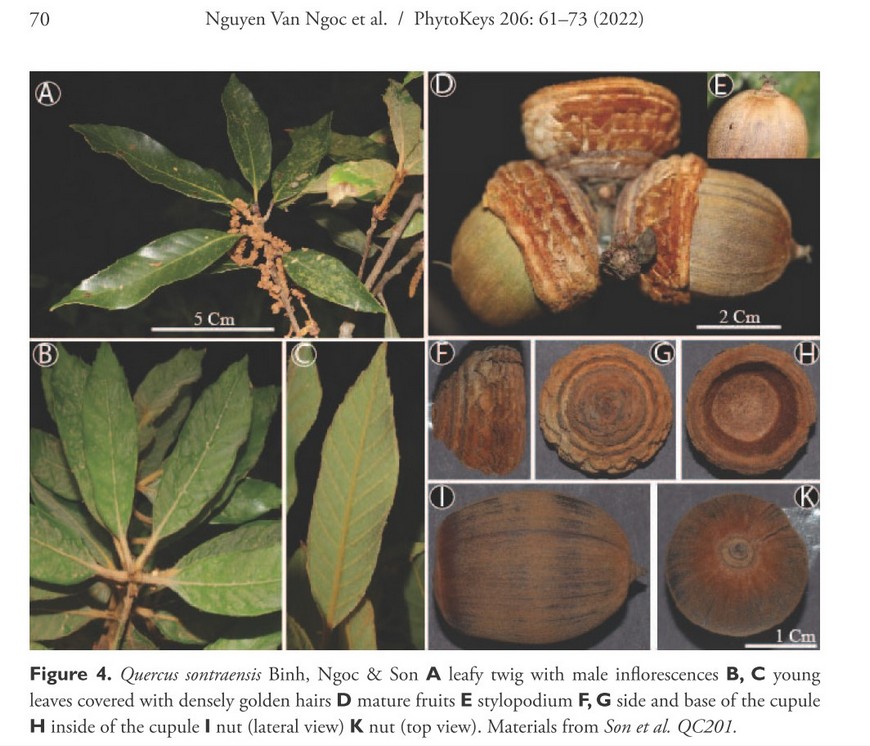| Quercus sontraensis | |
| Author | Ngoc, Binh & Son 2022 |
| Synonyms | |
| Local names | |
| Range | Da Nang City, Son Tra Nature Reserve, Son Tra Peninsula, Central Vietnam; 300-500 m; |
| Growth habit | 12 m tall; |
| Leaves |
7-12.5 cm X 2.2-3.5; elliptic to elliptic-lanceolate; apex acuminate or sometimes acute; base cuneate; margin regularly and distinctly serrate in apical 1/3 (or less); young leaves densely covered both sides with golden hairs, then glabrous; 9-14 veins pairs, impressed above, prominent beneath, as the midrib, and at an angle or 45-52° with midrib; tertiary veins conspicuous abaxially; petiole 0.8-1.5 cm long, at first with golden curly hairs, then soon glabrous; |
| Flowers | from January to March; male inflorescence 7-9 cm long; female inflorescence 2.5-3.5 cm long, axillary or terminal, erect, with solitary flowers; |
| Fruits | acorn ellipsoid, 2.3-2.6 cm long, 1.7-2 cm wide, densely hairy, apex flattened and hairy; solitary or to 3 together, sessile; cup halfround, bowl shaped, 1.2-1.7 cm high, 1.3-2.2 cm wide, enclosing 1/3 of nut; cup with 7-8 concentric rings of scales; rings densely covered both sides with yellowish-brown hairs; ring margin distinctly dentate except the 2 upper ones; basal scar 1.1-1.3 cm wide, slightly convex. stylopodium 1.5 mm long; maturing from September to October; |
|
Bark, twigs and |
young twig 1.5-2 mm thick, covered with curly golden hairs; mature twig glabrous, with lenticels; terminal and lateral buds ovoid, 3-5 mm long, 1.5-3 mm wide; budscales imbricate into 3-5 rows, ovate-triangular, pointed, ciliate at margin, with appressed hairs both sides; |
| Hardiness zone, habitat | |
| Miscellaneous | -- Sub-genus Cerris,
Section Cyclobalanopsis; -- Closely related to Q. langbianensis and Q. cambodiensis (both taxa in the" Q. langbianensis-Complex H.T. Biqnh & al. 2018"); -- Differs from Q. cambodiensis in having foliar margins distinctly serrate in apical 1/3, and a cup with all rings (except 2 upper ones) dentate at rim; -- Differs from Q. langbianensis in having a deeper cup, concentric rings distinctly dentate (except 2 upper ones), a broadly ellipsoidal acorn, a basal scar nearly flat; -- Critically endangered, as its range aera is only 12 km2 |
| Subspecies and varieties |
|
| Pictures |
|
